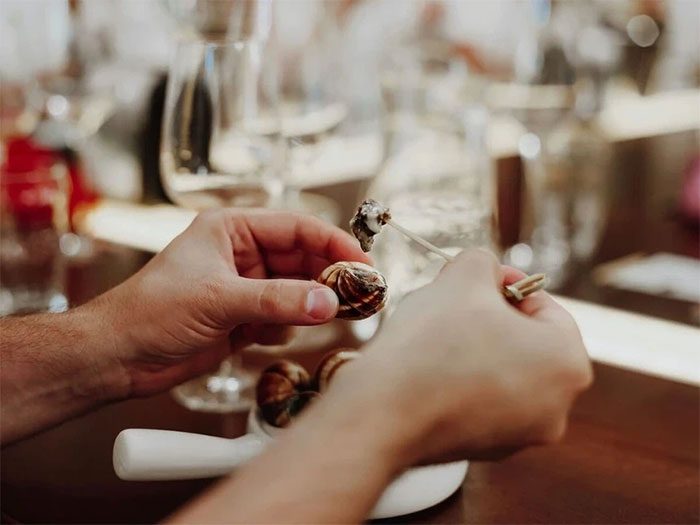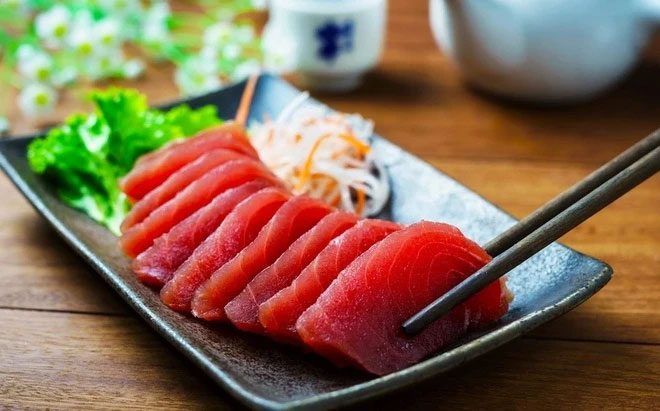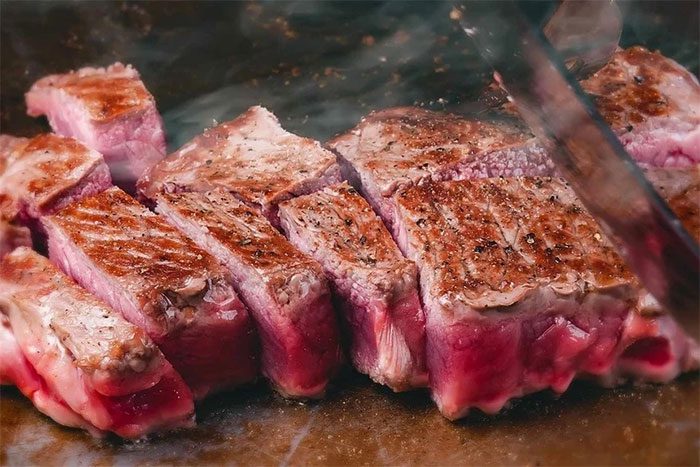Escargot, sashimi, and beefsteak are three of many dishes that can pose health risks if safe preparation and cooking processes are not followed.
Not just in Vietnam, but people around the world enjoy raw dishes. Many of these dishes have spread to other countries, becoming popular and often expensive.
However, according to Dr. Nguyễn Thảo Phương from the Institute of Malariology, Parasitology, and Entomology in Ho Chi Minh City, these foods can carry dangerous parasites such as tapeworms, liver flukes, and roundworms.
Escargot
Escargot (French for snail) is one of the most expensive delicacies in the world, originating from France. The primary ingredients for escargot are European garden snails, Turkish garden snails, and Burgundy snails.

Escargots are raised under specific conditions and fed a special diet, and are thoroughly prepared to ensure safety for consumers. (Photo: Matador Network).
Research has shown that eating escargot can help treat various ailments like joint pain and backaches. After harvesting from the farm, the snails are purged by feeding them special herbs and providing only water. The preparation process, which includes washing and boiling, can take several days to ensure that the dish is safe for diners.
If not properly prepared according to these steps, the dish can become a source of infection from rat lungworms, whose larvae can parasitize the human brain and cause eosinophilic meningitis.
Sashimi
Sashimi is a traditional Japanese dish consisting of thinly sliced raw fish and seafood, typically served with ginger, perilla leaves, seaweed, and accompanied by soy sauce and wasabi. Usually, these fish and seafood are frozen to eliminate parasites.

Many cases have been reported where individuals discovered parasitic worms in their bodies due to consuming raw fish of questionable quality. (Photo: Flickonfood).
According to European Union (EU) regulations, fish must be frozen at -20 degrees Celsius for 24 hours to kill parasites. The U.S. Food and Drug Administration (FDA) stipulates a temperature of -35 degrees Celsius for 15 hours or -20 degrees Celsius for 7 days.
However, to avoid affecting the flavor and presentation of the dish, these steps are often overlooked during preparation. This poses a risk of infection from parasites like fish tapeworms and roundworms.
In Vietnam, in addition to consuming sashimi with seafood, people also use freshwater fish to create raw salads. These dishes can transmit parasites such as the fish-borne roundworm and small liver flukes.
Beefsteak
Beefsteak is made from flat pieces of beef, typically 1-5 cm thick, that are grilled or seared on each side and served with sauce.

Many people prefer their beefsteak cooked medium rare, with the inside remaining pink and juicy. (Photo: Food & Wine).
The most popular doneness for beefsteak is medium rare (50% cooked), which leaves the inside of the meat pink and oozing red juices.
However, this cooking method does not kill the larvae present in the meat, which can lead to infections from parasites such as beef tapeworms and large liver flukes. Additionally, the thickness of the meat makes it harder for chefs to detect any cysts within the flesh.
Similar to beefsteak, dishes like rare beef noodle soup (phở bò tái), lime beef (bò tái chanh), and vinegar beef (bò nhúng dấm) are also favored by many Vietnamese.
Consuming rare or raw beef can lead to infections from tapeworm eggs or larvae residing in the intestines. Adult tapeworms can grow up to 12 meters long and can live in the human body for 20 to 50 years.


















































